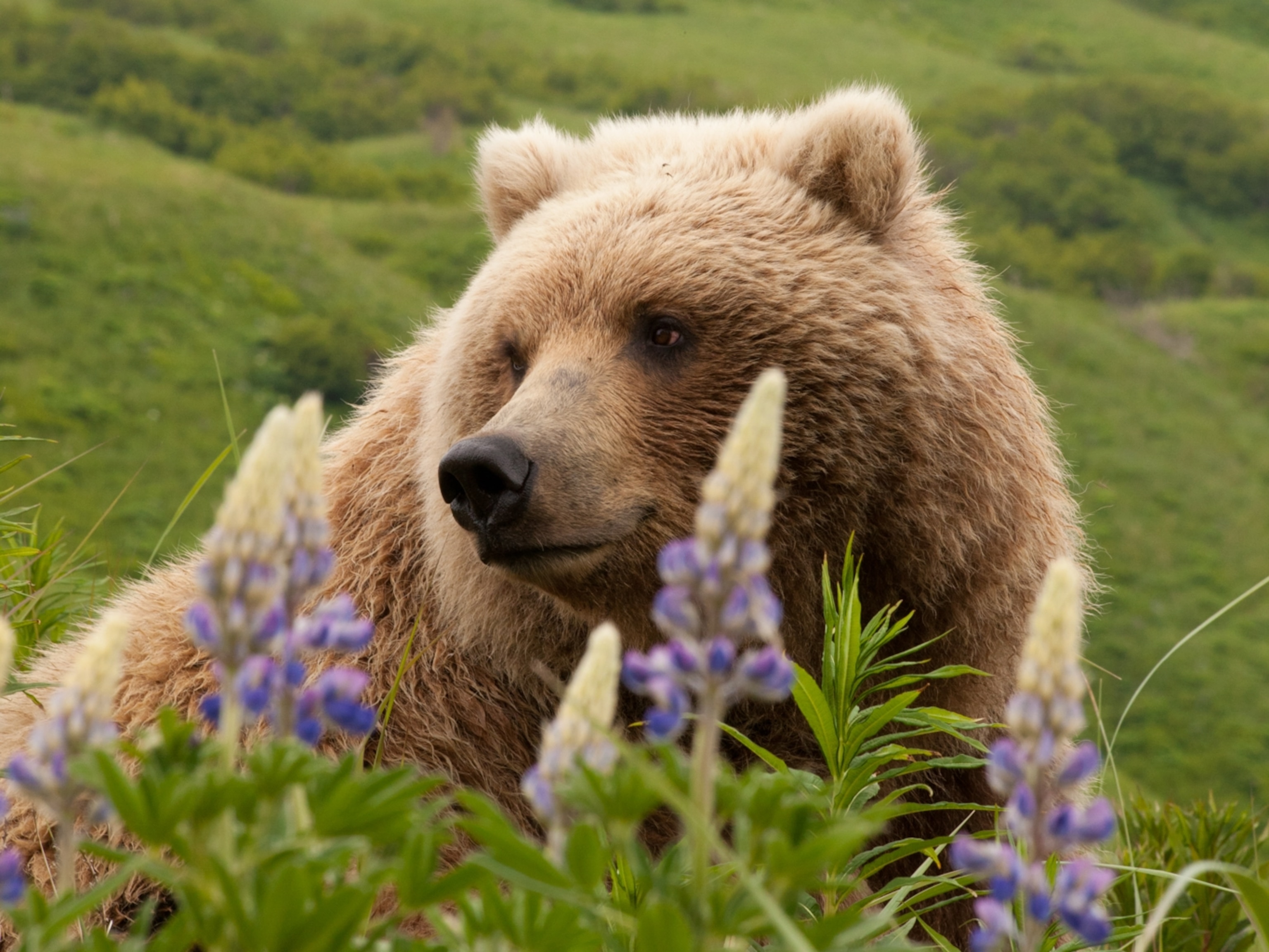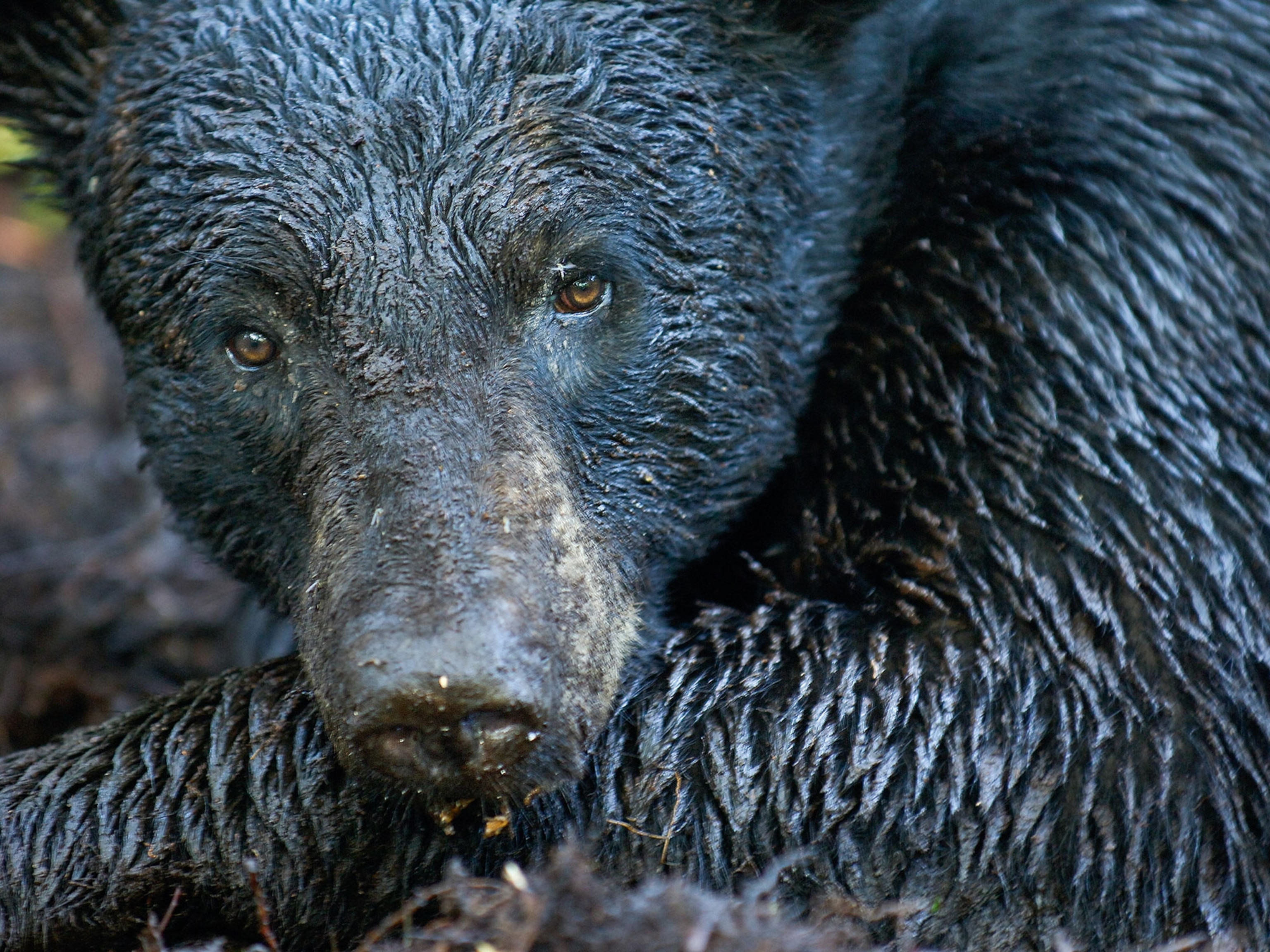
Bears really do chase skiers—but is this video fake?
Fabricated photos and videos of wild animal encounters aren't new, but one viral video of a bear chasing an athlete through the snow has some truth to it.
A young woman clips into her snowboard. She doesn’t notice the animal looming on the slope behind her. Singing along to the music in her headphones, she begins gliding down the mountain, unaware that she’s being followed. As she films herself, a grunting bear charges after her from behind. She’s oblivious until she looks at the video days later and realizes just how close she came to getting an all-too-personal lesson on food chains.
The adrenaline-pumping video was posted by Kelly Murphy of Australia. It left many viewers unsettled and others questioning its authenticity.
We can help with the latter: It’s not real.
(My shark photo took over the internet, inspiring countless fakes and real awareness.)
How we know the video's fake
Murphy was skiing at the Hakuba47 resort on the Japanese island of Honshu. Though Asiatic black bears are found in the area, with several springtime sightings at the resort in recent years, the bear in the video is a brown bear, which includes the North American subspecies, the grizzly bear. The northern Japanese island of Hokkaido actually has a healthy population of Ussuri brown bears, which can rival Alaska brown bears in size, but that’s several hundred miles and an ocean channel north of Hakuba.
Why Murphy decided to post the fabricated video is a mystery (she insisted the video is real), though it makes yet another compelling argument for not wearing headphones in the mountains. Her timing was good, however, as bears across the Northern Hemisphere were waking up from hibernation, and skiers should always keep their eyes (and ears) open.
A genuine cautionary tale
Matt Mosteller would know. The avid outdoorsman from Calgary, Alberta, was backcountry skiing with a friend in Montana’s Glacier National Park when he came face-to-face with an angry grizzly bear.
He was on a mountain, admiring the alpine scenery and watching his friend ski down a chute when he saw something coming up a ridge toward him on his left. It was a bear. His adrenal system spiked. Then he saw a second bear on his right, much larger and much closer. Instantly he started skiing at the nearly full-grown cub to reach the entrance to the chute and the only way down the mountain. The sow immediately lunged after him, raking its claws across his backpack and skis.
An expert skier with his life on the line, Mosteller pointed his skis straight down the steep, rock-walled chute and tucked. It didn’t work. The barreling bear—which Mosteller describes as “freight-train sized”—was on his heels. So he started making turns, hoping to somehow trip the bear up. Instead of charging straight at him, the furious bear followed his tracks as he zig-zagged down the mountain, passing each other after each turn. Mosteller says he was so close that he could see plaque on the bear’s teeth and its roaring mouth “spewing foam.”
Deepening snow slowed the bear enough for Mosteller to pull away slightly. At the bottom of the run—where, much to Mosteller’s dismay, the terrain flattened—he stopped and turned to see the grizzly sow still bounding at him.
What saved him was a stroke of luck. While he waved his poles in the air with one hand and frantically dug in his pack for his bear spray with the other, his friend, in his own moment of panic, was attempting to bury himself with loose rocks at the foot of a nearby cliff. The bear heard the rocks clacking, saw Mosteller acting strangely, and decided to turn and race up the mountain back to its cub.
Mosteller and his friend, who’d planned to stay in the area for several days, rushed back to their campsite, grabbed their gear, and hightailed it out of the mountains. Park biologists later told them this was a smart move. Had they stayed, the grizzly may have hunted them down in an effort to protect its cub.
Keep that bear spray within reach
It’s an extreme example, but a cautionary tale for skiers and snowboarders. Bears in North America typically wake from hibernation near the beginning of April.
“It’s definitely something spring skiers need to be thinking about—you don’t want to cut a turn into a day-bedded bear or, God forbid, a den,” says Jamie Jonkel, a wildlife biologist and bear expert with Montana Fish, Wildlife, and Parks.
Dens can mean cubs, and a grizzly or black bear sow with cubs is a dangerous animal. Just ask Mosteller.
Jonkel recommends keeping your eyes open for fresh tracks in the snow and watching for bear dens on backcountry ski slopes—look for obvious dirt smears in the middle of the snow where the bear came and went from its den. And, as Mosteller learned, keep your bear spray easily accessible at all times.
“You’re not promised tomorrow. Making today matter makes all the difference. Just get outside … and bring bear spray,” Mosteller says.





